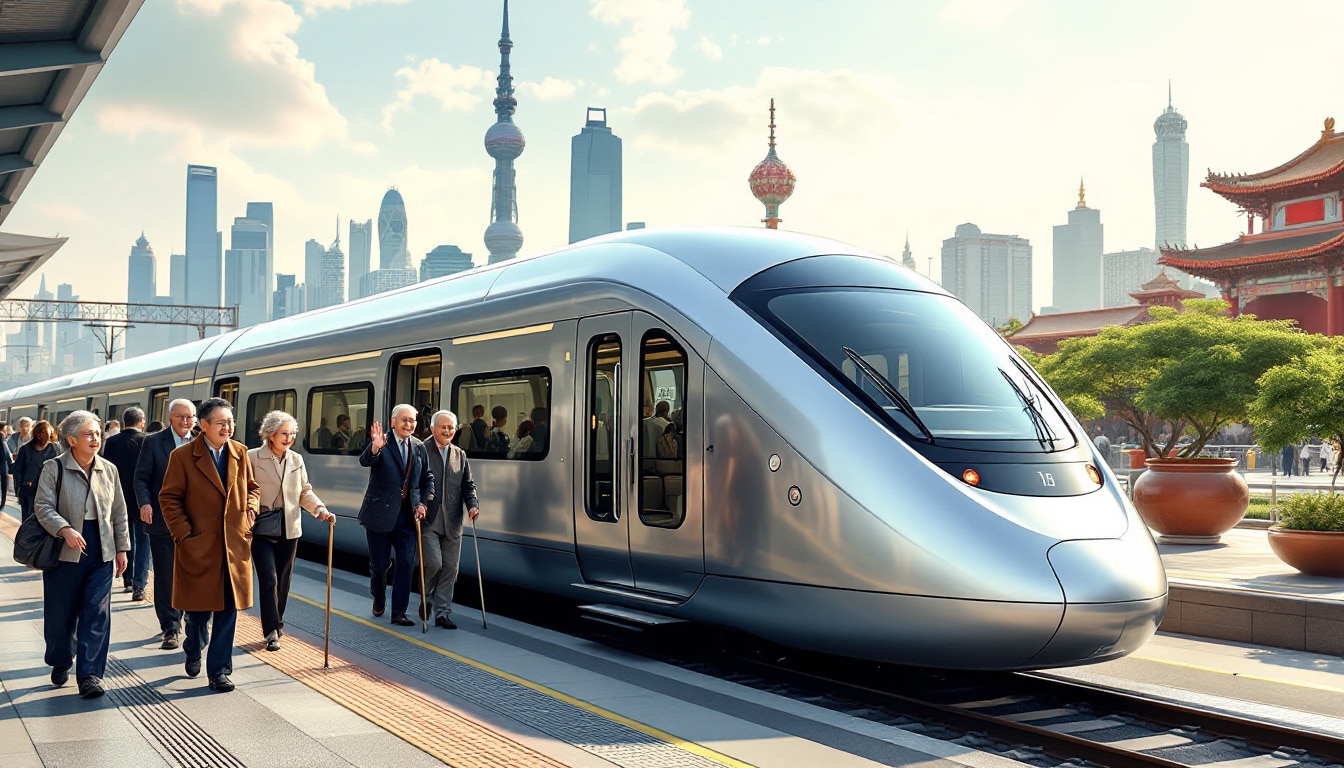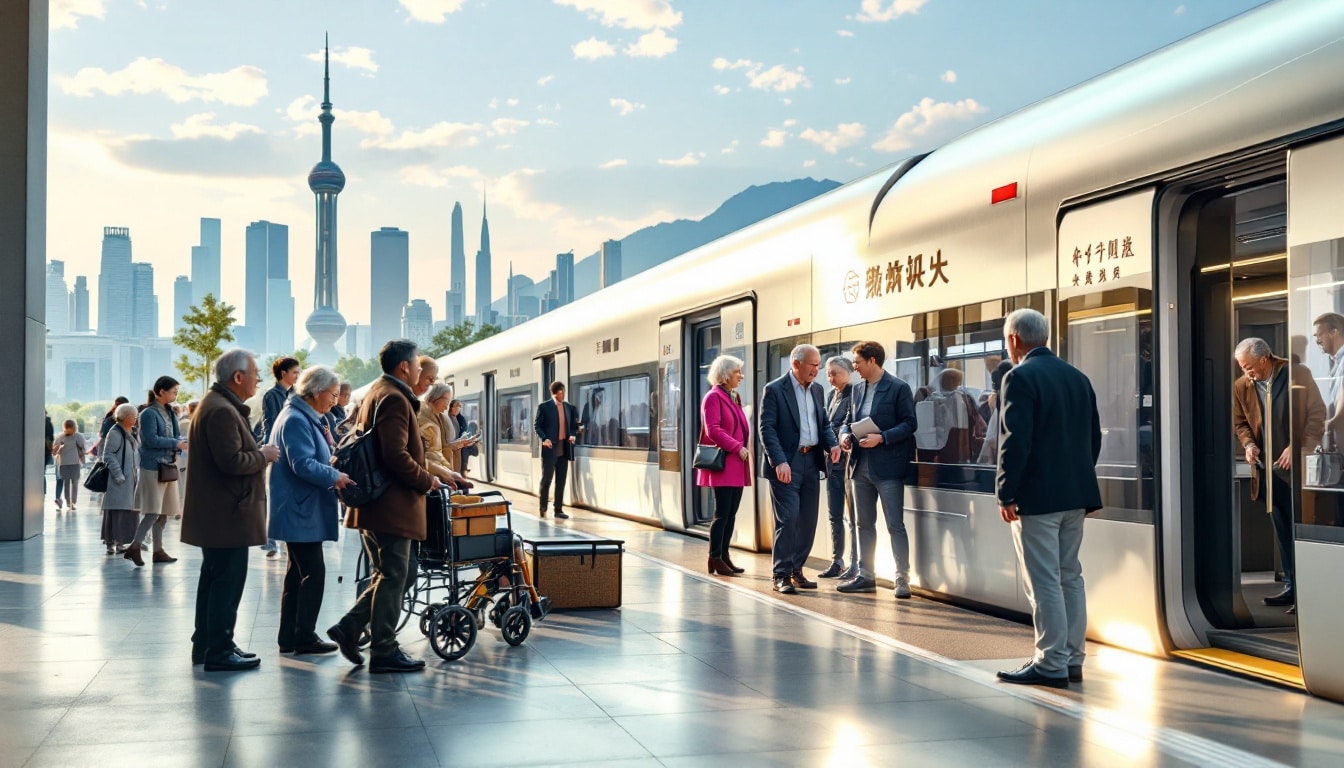China is innovating by launching the ‘silver trains’, a revolutionary initiative aimed at its senior population. Designed to meet the specific needs of elderly people, these trains aim not only to facilitate travel but also to boost the economy by stimulating senior tourism. With adapted facilities and medical services on board, this new rail fleet aims to transform the travel experience for retirees while revitalizing the country’s tourism sector.

Table des matières
ToggleChina’s ‘silver trains’ for seniors
China recently announced the launch of the silver trains, a bold initiative designed to meet the growing needs of elderly people. This project was highlighted in an action plan published by several ministries on February 11. These trains will be specially arranged to ensure a high level of comfort and security to facilitate the travel of seniors across the country. With services designed to enhance access and well-being for travelers, this initiative aims to encourage senior tourism and stimulate the local economy while providing an enriching travel experience.
A response to the aging population
As China’s population ages rapidly, the development of silver trains represents a proactive response to this demographic challenge. The planned arrangements include sleeping carriages and adapted seats, as well as user-friendly toilets and access ramps to make travel more inclusive. This rail network, scheduled for 2025, could thus become a breath of fresh air for seniors seeking to explore the riches of their country while enjoying services tailored to their specific needs.
An economic dynamic to exploit
The launch of the silver trains could also represent a significant lever to boost the economy. By offering marked tourist routes, China aims to develop the senior tourism sector and attract new travelers. The market opportunities are considerable, as more and more retirees seek to escape and discover the world. Through this initiative, the country could not only revitalize its tourism industry but also meet a growing demand for tailored and quality services, thereby enhancing the well-being of elderly people while supporting the local economy.
The establishment of silver trains in China represents a significant advancement in adapting rail infrastructure to the needs of elderly people. Indeed, this initiative is part of a drive to dynamize senior tourism, aiming not only to provide tailored services but also to encourage travel among a population that often feels marginalized by traditional forms of transport.
The specific arrangements of these trains, such as adapted sleeping carriages, equipped toilets, and accessibility ramps, place the comfort and safety of seniors at the heart of this initiative. This allows for the creation of a pleasant travel experience, eliminating the obstacles that may have discouraged elderly people from exploring China’s vast cultural and natural heritage.
From an economic perspective, silver trains also represent a potential lever for the country’s economic recovery. At a time when domestic consumption is declining, mobilizing this segment of the population could help revive the tourism and transport sectors, leading to positive repercussions for the entire economy. By addressing the needs of seniors, China could also pave the way for a new and expanding market focused on the travel experience of elderly people.
Finally, this initiative could serve as a model for other countries facing similar challenges related to their aging population. The fusion of senior well-being and economic growth could thus represent an innovative approach to addressing contemporary demographic challenges while fostering a valuable intergenerational connection.







